#museums during covid-19
Text
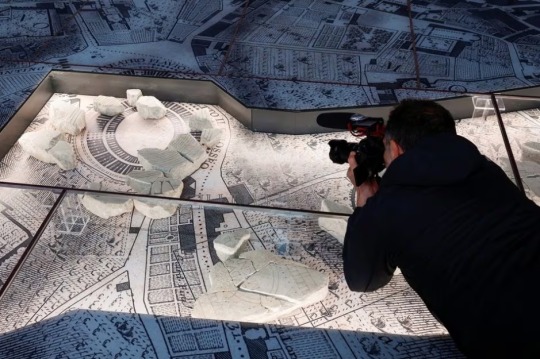

Ancient Monumental Marble Map of Rome on Display After 100 Years
A marble map of ancient Rome, that hasn't been put on public view for almost 100 years, is getting its very own museum within sight of the Colosseum.
The Museum of the Forma Urbis, enclosed within a new archaeological park on one of Rome's famous seven hills opens on Friday -- the latest offering from a city that is eager to broaden its attraction for growing hordes of tourists, according to Reuters.
"This is a beautiful day. We are opening an archaeological park in an extraordinary part of the city and a new museum showcasing a masterpiece which has not been visible for about a century," said Rome Mayor Roberto Gualtieri.
"We want a city where the museums and the streets are linked, and where people, while walking around, can fully appreciate and enjoy the beauty, but also better understand how our city has been transformed."
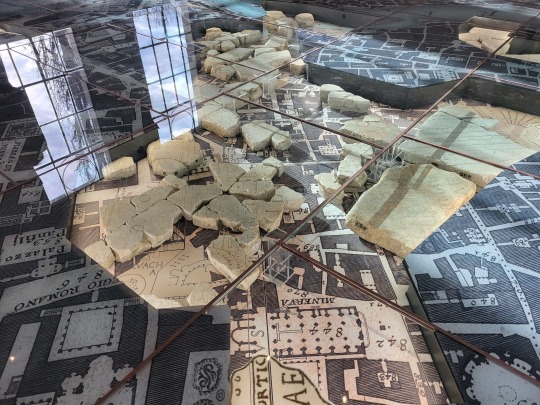

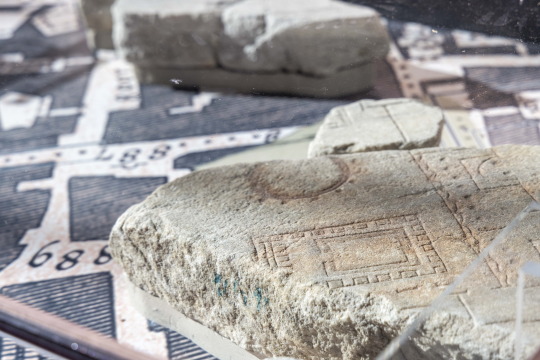
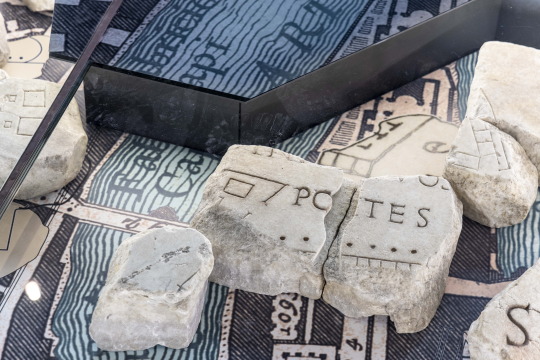

The Forma Urbis was a monumental, highly detailed marble map of ancient Rome carved during the reign of the Emperor Septimius Severus between 203 and 211 AD, engraved onto 150 separate slabs and measuring 18 by 13 metres (60 by 43 feet).
It was displayed on a wall in the ancient city, but over the centuries it gradually disintegrated, with locals using some slabs for new buildings.
During excavations in 1562, fragments were recovered and scholars estimate around 10% of the whole has survived, including sections showing the Colosseum and Circus Maximus, as well as floor plans of baths, temples and private houses.
The huge carving has proved a valuable resource for understanding the layout of ancient Rome, but all the remaining pieces have not been shown together since 1924.
In its new, innovative setting, the fragments have been laid out on a reproduction of a famous map of Rome created in the 18th century by the surveyor Giovanni Battista Nolli, who is credited with making the first accurate street plan of Rome.
The marble chunks lie on top of the Nolli map, showing their relation to the developing Renaissance city.


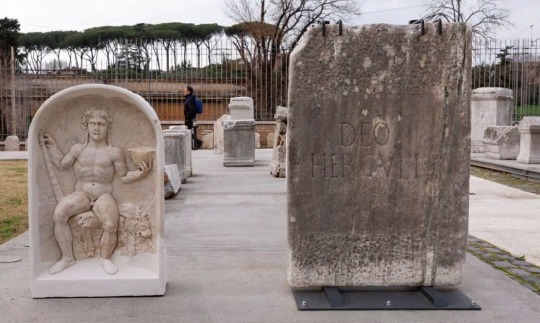

Outside the museum, in the open-air park on the side of the Caelian Hill, archaeologists have out laid out walkways lined with ancient Roman grave markers and marble columns found in excavations around the city in recent decades.
"The Caelian Hill, one of the seven hills of ancient Rome, has remained in the shadows, unknown and inaccessible for a very long time. Today, we are finally giving it back to the city," said Claudio Parisi Presicce, who oversees Rome's cultural heritage.
"The hill has a special importance because it is what unites the monumental area of the Imperial Forums, the Roman forum, the Colosseum and the area of the Appia Antica," he said.
The 5-million-euro ($5.5 million) project is part of a broader refurbishment of Rome, which has seen a tourism boom since the end of the COVID-19 pandemic and is expected to be submerged by visitors in the 2025 Roman Catholic Holy Year.

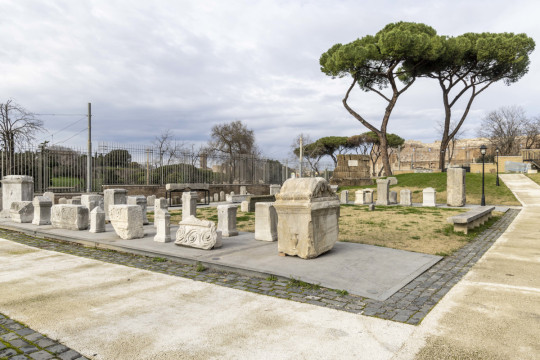
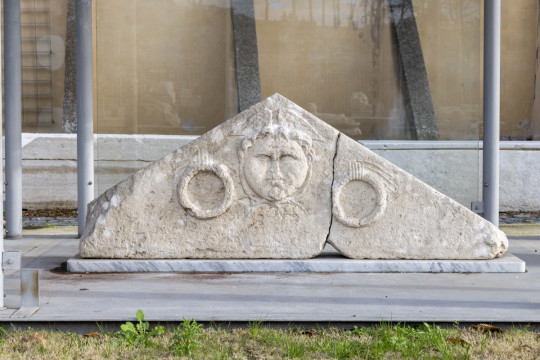

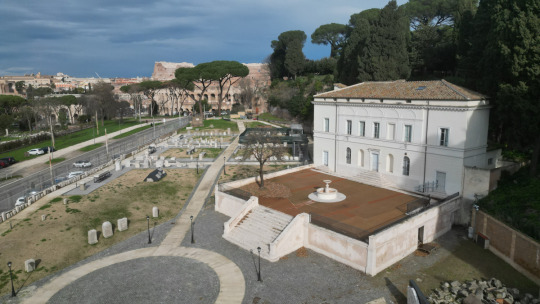
#Ancient Monumental Marble Map of Rome on Display After 100 Years#The Museum of the Forma Urbis#The Forma Urbis#Emperor Septimius Severus#ancient artifacts#archeology#archeolgst#history#history news#ancient history#ancient culture#ancient civilizations#ancient rome#roman history#roman empire#roman emperor#roman art
153 notes
·
View notes
Text
A human rights organization is condemning a recent rally near the National Holocaust Monument in Ottawa, saying it dishonours the memory of the six million Jews killed by Nazi Germany during the Second World War.
Video posted online of the April 2 gathering shows a few dozen people with flags and signs associated with various conspiracy theories protesting in front of the Canadian War Museum.
They then cross the street and wander through the austere monument.
Several carry placards with anti-vaccine messages, while people can be heard comparing the plight of Jews during the Holocaust to the restrictions unvaccinated Canadians faced during the COVID-19 pandemic. [...]
Continue Reading.
Tagging: @politicsofcanada
66 notes
·
View notes
Text
So Ron "protect kids from the gays" DeSantis has just signed a law requiring all Florida students - from high-schoolers to children as young as kindergarten - to learn about the "evils of communism" and to receive instruction for how to resist "indoctrination" in higher education.
"A lot of these universities will tell them how great communism is," DeSantis said, with no citation of any this allegedly pro-communist college curricula. "So we are setting the proper foundation."
They also decided to make this a spectacle on the anniversary of the 1961 Bay of Pigs invasion, which was a disastrously botched CIA-organized attempt by armed rebels to overthrow the Cuban government.
"Florida students currently can receive lessons on communism in high-school social studies courses or in a seventh-grade civics and government course. A high-school government class that has been required for graduation also includes 45 minutes of instruction on “Victims of Communism Day” which covers communist regimes through history." (source: USA Today)
Not sure how long it's going to remain, but it seems very....interesting that in the attached USA Today article, there included a viral video of a Cuban refugee (huh...interesting how DeSantis hasn't shipped him to Martha's Vineyard) going through a grocery store in the US and marveling at how full the shelves are; unlike communist Cuba with its shortages of essentials that is totally the fault of the communist government and not at all the product of decades of strict embargoes by the United States. An embargo that recently wouldn't allow life-saving medical equipment from landing on the island during the height of the Covid-19 pandemic.
Obviously this is all culture war bullshit in a state with a collapsing insurance market, literacy that is the 8th worst in the nation, and had one of the largest increases of families with children and veterans experiencing homelessness in the nation last year. I'm sure spending millions of dollars on anti-communist museums is really what the struggling people both want and need in these difficult times.
#Ron DeSantis#Florida Schools#Florida Education#Indoctrination#Red Baiting#US History#Communism#Anti Communism#Republicans#Culture Wars
5 notes
·
View notes
Text
Princess of Wales - 2022 Statistics (FULL YEAR)
In 2022, the new Princess of Wales completed (by my count) 168 engagements, around 53 more than the amount of engagements she completed by my count in 2021 and 39 more than 2020. As well as this, she was sighted (or appeared) 16 times and appeared in a whopping 26 official (or unofficial and leaked!) photographs.
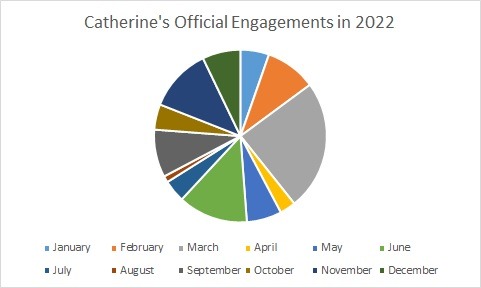
She gained four new patronages throughout the year and finished with 25 patronages. Of her 168 engagements, 67 were related to one of her patronages, averaging at one patronage visit every 0.39 engagements. Her most visited patronage was, of course, the Royal Foundation of the Prince and Princess of Wales (formerly, the Royal Foundation of the Duke and Duchess of Cambridge), with 46 visits. This was followed by the Lawn Tennis Association and the All England Lawn Tennis and Croquet Club (with 3 visits). She performed no engagements on behalf of The Air Cadet Organisation, the Anna Freud National Centre for Children and Families, Evelina London Children’s Hospital (she unofficially visited the hospital during the Platinum Jubilee celebrations), Family Action (she supported them in an article in Good Housekeeping), the Forward Trust, the National Portrait Gallery (her birthday portraits were released in conjunction with the NPG), the Natural History Museum, Place2Be, the Royal Photographic Society, the Scouts, or the Victoria & Albert Museum.

Of her engagements, 64 have been solo and 73 accompanied by her husband, the Prince of Wales. Five were also with either Prince George or Princess Charlotte, five with a range of foreign royals (including the two in Denmark), as well as 20 with either the whole or most of the working British Royal Family (note: some of the events with foreign royals also included a lot of members of the British Royal Family), and one with one other solo royal (the Princess Royal).
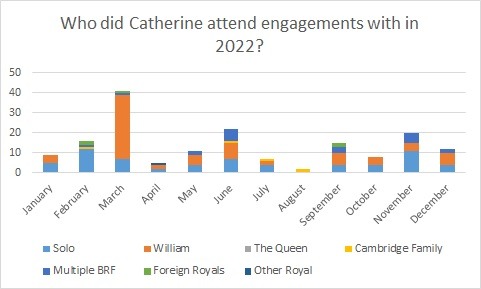
105 of her engagements physically took place in England, with all bar 48 physically occuring in the United Kingdom (with none in the Republic of Ireland). Of the 105 engagements which took place in England, 70 occured in London. Catherine's engagements also took her to 19 other areas of the UK. Only 7 were online or via telephone. Catherine also performed engagements in Wales, Scotland, and Northern Ireland. Catherine also undertook a working trip to Denmark, a tour of the Caribbean (which saw her visit Belize, Jamaica and the Bahamas), and an official visit to Boston in the USA.
During the year, she performed engagements on a variety of themes. 32 of those engagements were predominantly related to her Early Years initiative, while 15 were linked to culture and 13 linked to sports. Due to the return of overseas trips, State Visits, and the death of HM Queen Elizabeth II, 35 engagements were diplomatic in nature. 10 engagements were on the theme of mental health, while she also completed 9 engagements linked to children and young people, 7 linked to the military, 5 linked to Covid-19, 3 linked to the outdoors, and 1 which was specifically linked to the Commonwealth. Catherine also completed 38 engagements which could not otherwise be categorised.
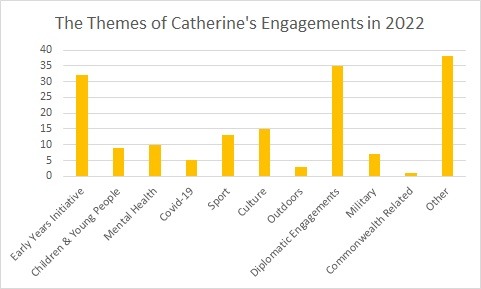
Clotheswise, her most worn designer has been Alexander McQueen, with 25 outfits, followed by 10 outfits from Catherine Walker, while 18 items of clothing were unidentified. Her most carried bag designer was Mulberry (12), followed by Emmy London with 9, and 5 which were unidentifed. Mulberry has been her most carried bag designer in every year apart from 2020. Her most worn shoe designer returned to being Gianvito Rossi (with 37 wears), followed by 11 pairs from Emmy London, and 6 from both Rupert Sanderson and Jimmy Choo. Gianvito Rossi was her most worn shoe designer in 2016, 2017, 2018, 2019, and 2020. Despite Kiki McDonough creeping back into her earring rotation (with 18 wears), Catherine predominantly wore pieces inherited from either Diana (20) or the Queen (19). Aside from them, she also wore Annoushka jewellery 11 times. When it comes to accessories, she continued to wear face masks from Amaia Kids (5 times), although the return of hats meant her top accessories designer was Philip Treacy. She also wore 8 unidentified pieces. According to my (100% wrong) calculations - created from my own criteria (where items are counted each time she wears them), she wore £109,654.98 worth of new clothes this year and £271,423.79 worth of clothes in total.
48 notes
·
View notes
Text

Providence! I'm having an exhibit and I'm coming to your city for a quick visit this week. It would be great to meet you at Paper Nautilus on Thursday night. Jan 19, 2023, 6-8 PM!
Protest Grim Reapers
Archival Press Photos from Public Collectors
On view Jan 19 – Feb 28, 2023
Reception Jan 19, 6-8pm
Paper Nautilus Books, Wayland Square
19 South Angell Street, Providence, RI, 02906
The Public Collectors project Protest Grim Reapers is a dive into the world of discarded and resold press photo archives. This exhibit reproduces details from 27 press photos of the famed Pale Horse rider, spanning from the late 1960s to the early 1990s. Across six of New England’s coldest weeks, we’ll get cozy with the documented personification of death in a neighborhood bookshop.
From the back cover of the book that accompanies this collection:
The grim reaper is an enduring figure at demonstrations. The reaper—or sometimes simply an angel of death—appears at protests for any cause where the gravity of a death figure feels appropriate. The reaper traditionally carries a scythe and wears a black hood and a skull mask or skull face paint, but sometimes the scythe is replaced with a different symbolic object.
For the past four years I have been collecting press photos of grim reapers at protests against hunger, radioactive waste, animal abuse, the death penalty, the Vietnam war, the closing of a Chrysler plant, demands for clean air and water, restrictions on abortion and more. These older press photos are routinely sold on the secondary market by dealers that acquire the archives of newspapers, or others that have purged their file copies. The dates of these photos reflect the availability of darkroom prints and wirephotos, taken before digital photography became dominant at most news outlets.
In recent years, the grim reaper has been in the news when people wearing this costume attended protests against keeping beaches and schools open during the COVID-19 pandemic. In general, the reaper tells spectators: ‘I am here because this is a matter or life or death for someone or something. I don’t want to be here, but because of you, your corporation, your politicians, or your crimes against humanity, my presence is justified. If this wasn’t deadly serious, I would have stayed at home or worn something else.’
— Marc Fischer / Public Collectors
Marc Fischer is the administrator of Public Collectors, an initiative he formed in 2007. Public Collectors aims to encourage greater access and scholarship for marginal cultural materials, particularly those that museums ignore. Public Collectors’ work includes the Library Excavations publication series and web project, Quaranzine—which produced 100 single page publications with over 75 collaborators at the start of the COVID-19 pandemic, and Malachi Ritscher—a project about the late Chicago music documentarian and activist, produced for the 2014 Whitney Biennial. In addition to Public Collectors, Fischer is also a member of the group Temporary Services (founded in 1998) and a partner in its publishing imprint Half Letter Press (ongoing since 2008). He is based in Chicago. www.publiccollectors.org
#Public Collectors#Marc Fischer#Protest Grim Reapers#Public Collectors Exhibitions#Providence#Paper Nautilus
25 notes
·
View notes
Text
Meduza's The Beet: Heels for freedom
Hello, and welcome back to The Beet!
Eilish Hart here, the editor of this weekly dispatch from Meduza that brings you original reporting from across Central and Eastern Europe, the Caucasus, and Central Asia. If someone forwarded you this email, sign up here to receive future issues of The Beet. Want to sample some more of our work first? Check out last week’s story about how independent journalism persists in Turkmenistan. And don’t miss my full interview with Access Now tech-legal counsel Natalia Krapiva, who kindly joined Meduza’s The Naked Pravda podcast to discuss recent revelations about the use of Pegasus spyware in Armenia during the 2020 Nagorno-Karabakh war and its aftermath.
Hundreds of thousands of protesters gathered in Warsaw last Sunday for an anti-government march timed to coincide with the 34th anniversary of the partially-free elections that ushered in the fall of Poland’s Communist regime. With a parliamentary vote coming up in Poland later this year, and President Andrzej Duda now moving to water down a controversial piece of legislation that critics fear will be used to target the opposition, this is something to keep an eye on. But it’s not the topic of this week’s feature. Instead, we’re turning to Warsaw to celebrate the start of Pride Month with a story that takes us inside the Polish capital’s drag scene and introduces us to its late queen, Kim Lee. Journalist Joanna Kozlowska reports for The Beet.
Heels for freedom: Kim Lee and the history of Polish drag
By Joanna Kozlowska

Kim Lee in her Warsaw studio before a performance. 2019.
ZULA RABIKOWSKA
Just over a century ago, looking into the future after emerging from a world war and 120 years of foreign occupation, Poland abolished all aristocratic titles. Later, decades of Communism rendered all thoughts of royalty remote. Yet this year, the Polish capital has crowned a queen, and the choice may surprise some.
A short walk west from Warsaw’s main train station, stepping into the whitewashed mansion that houses a branch of the municipal museum, visitors are greeted by a riot of pastel colors. A black-haired figure in a sumptuous golden dress smiles from a poster near the entrance that reads, Kim Lee. The Queen of Warsaw. The museum’s latest blockbuster offering, the temporary exhibition celebrates an artist lovingly dubbed “Poland’s best and only Vietnamese drag queen,” whose life story is as stunning as the costumes assembled inside.
“Kim Lee had to be real, because nobody could have made her up,” a column in Poland’s largest left-wing daily recently proclaimed. “If she were a character from a TV show, conservative reviewers would tear it apart. More progressive ones, too, might doubt the scriptwriters’ sanity.”

A display from the exhibition “Kim Lee. The Queen of Warsaw.” 2023.
TOMASZ KACZOR / MUZEUM WARSZAWY
Of the half dozen people The Beet’s correspondent interviewed who knew Kim Lee’s creator Andy Nguyen before COVID-19 cut his life short in 2020, all would agree. Nguyen’s story is indeed almost too unusual to be true.
A star student in his native Vietnam, Nguyen came to Poland on a scholarship just as Communism was being dismantled. He got a research job at one of the country’s top physics institutes, only to see his pay fall to a pittance during the economic turmoil of the 1990s. He then worked odd jobs to support himself and his young family. For a time, the former scientist ran a market stall selling East Asian goods that a close friend compared to those at Warsaw’s now-demolished 10th-Anniversary Stadium. (Once the site of Communist Party galas, the stadium was later reduced to a sprawling outdoor bazaar where vendors from all over the former Eastern Bloc hawked pirated software, flouncy underwear, and dubious health remedies).
Nguyen’s drag persona, Kim Lee, was born at the turn of the millennium and soon shot to stardom beyond the wildest dreams of anyone in Poland’s fledgling drag scene. “She whizzed into the mainstream like a meteor,” says Teo Łagowska, a performer with Warsaw’s Drag King Szarm Trio collective.
Nguyen’s long-time partner, Remigiusz Szeląg, concurs. “Kim performed everywhere,” he recalls. “Non-stop, all over Poland, he was a fixture at ‘straight’ parties and club nights, at burlesque shows. He appeared on TV, on discussion panels. He twice gave lectures at the University of Warsaw — needless to say, in full drag.”

Andy Nguyen (Kim Lee) getting ready for a performance in his studio. Warsaw, 2019.
ZULA RABIKOWSKA
Pleasant surprises
Magdalena Staroszczyk, who curated the exhibition in Warsaw, has no doubt that it belongs in a public museum. She is visibly proud of bringing the project to fruition, not least given the Polish government’s enduring anti-LGBTQ stance. “Queer history should be just as present in various institutions as any other [history],” she underscores.
For almost a decade, Poland has made headlines for its ruling party’s dogged defense of “traditional values” that critics say amounts to little more than anti-LGBTQ policies. Successive electoral campaigns have seen the Law and Justice Party intimidate voters with the “rainbow menace,” while top officials — including Poland’s current president and education minister — have suggested that LGBTQ people don’t deserve equal rights. By October 2019, more than 60 local and regional councils had adopted anti-LGBTQ declarations, with right-leaning councilors decrying the spread of an “LGBT ideology” they claim threatens families. Local authorities and Polish courts have since scrapped some of these resolutions (in many cases for fear of losing E.U. funding), but a sense of deep unease remains.
Both Szeląg and Krzysztof Tomasik, Nguyen’s friend of many years and the author of multiple books on Polish LGBTQ history, describe the Warsaw exhibition as a turning point for queer visibility. The show, Tomasik stresses, is housed in a state institution — a clear victory for those calling for greater inclusion, even if the museum’s financing comes from Warsaw’s relatively liberal city hall, rather than Poland’s Culture Ministry.
Staroszczyk, the curator, sees Nguyen’s’s life and work as an integral part of Warsaw’s history. She also notes the artist’s close links to the city’s Wola district in particular, where the museum is located. Nguyen, a long-time resident of the neighborhood, kept more than 1,000 hand-sewn costumes in a space in Wola that became known as “Kim Lee’s Dressing Room.” He also performed in many local clubs, some of which popped up in the district’s shuttered factories.

Nguyen choosing an outfit for a performance. 2019.
ZULA RABIKOWSKA

Nguyen sewing a costume in his studio. 2019.
ZULA RABIKOWSKA
Today, Wola retains a post-industrial feel, with the high-rises that used to house its workers towering over the museum’s Neoclassical pile. Staroszczyk says that neighbors have been venturing in to get what for many is their first taste of drag.
“We have one neighbor in particular, an older lady who I’m told has seen the show several times already. She’s been delighted and has been bringing friends along. That was one of the pleasant surprises,” the curator says.
Groups of retirees — most but not all of them women — regularly book guided tours of the exhibition, Staroszczyk adds.
Local councilors from the Law and Justice Party, meanwhile, questioned the rationale behind the exhibition, while some right-wing and Catholic publications accused the museum of promoting a “deviant lifestyle.” However, as of early June, there has been no sustained political or media campaign against the show, nor protests trying to disrupt it.
On an overcast Saturday in May, the exhibition was well-attended. Groups of visitors admired Kim Lee’s hand-crafted creations — from silk kimonos to voluminous gowns that wouldn’t look out of place in Bourbon-era Versailles — and attempted their own drag transformations, trying on frilly boas and curly blond wigs. Two middle-aged women giggled with delight as they posed before a mirror garlanded with flowers. One 19-year-old visitor named Maciek admitted he’d been surprised to discover that Kim Lee had sold out clubs years before RuPaul’s Drag Race — the U.S. reality competition series that brought drag to a wide audience — premiered on Polish Netflix in the early 2010s.

The opening of the exhibition “Kim Lee. The Queen of Warsaw.” 2023.
TOMASZ KACZOR / MUZEUM WARSZAWY
Polish divas and a whiff of the West
Researcher Jakub Wojtaszczyk, whose book of interviews with Polish drag performers was published last June, says that self-described drag queens began appearing in the early to mid-1990s, not long after Communism’s collapse. Their acts often harked back to Polish “divas” from Communist times: cabaret star Violetta Villas with her layered, feathered gowns, 1960s sex symbol Kalina Jędrusik, who scandalized crowds with her backless outfits, and patrician mezzo-soprano Irena Santor were all clear favorites.
One of the drag scene’s stalwarts, Lady Brigitte, recalls impersonating both Villas and Santor during her performances in the 1990s. She says that many queer men at the time embraced Villas as an icon. “She was a colorful flower, a bright light that seemed to have arrived [in Communist Poland] from America, she was bold and courageous, and above all, different,” the drag queen says.
“Of course, we’d also tackle foreign figures like Cher and Tina Turner — you wanted to have that whiff of the West. But most of each show would revolve around Polish artists,” she explains.
According to Ludmiła Janion, a cultural studies scholar at the University of Warsaw, the history of Polish “queer icons” goes much deeper. As she speaks, Janion pulls out photos of cross-dressing Polish actors from the 1910s, 1920s, and 1930s, one of them the spitting image of U.S. dance pioneer Isadora Duncan. One of the extraordinary performances of that time, she says, comes from the 1937 comedy Neighbors (Piętro wyżej, in Polish). A glittering romp about a feud between two music-loving residents of a Warsaw townhouse, it shows cabaret heartthrob Eugeniusz Bodo wow an audience with his impersonation of the American actress Mae West. “Sex appeal is our womanly weapon,” Bodo sings as he whirls around the stage in a blond wig and a sparkling black dress.
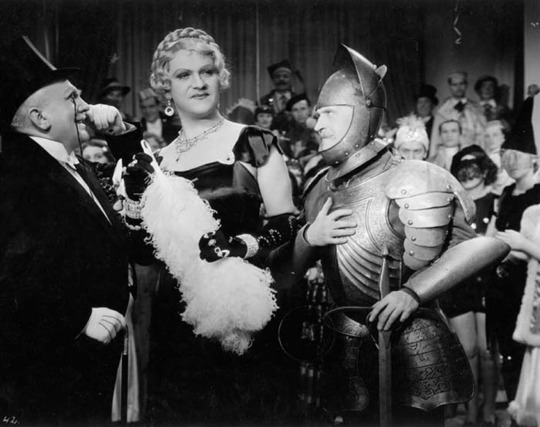
Eugeniusz Bodo (center) impersonating Mae West in the 1937 film “Neighbors”
WIKIMEDIA COMMONS
Some Polish film critics view the scene as a nod to LGBTQ audiences, pointing to the blossoming of queer culture in interwar Warsaw. “Bodo never got married. He wasn’t the type to chase after women,” Janion explains. “Of course, we can’t be sure that he was gay, but he was an ambiguous figure,” she adds, noting the actor’s string of cross-dressing characters during the brief but intense flourishing of Warsaw’s cabaret scene in the early 20th century.
With the advent of Communism, this artistic freedom came to an end. Cross-dressing performances did not disappear, Janion says, but like much else, they retreated to the private sphere; to the semi-safety of high-rise apartments and tipsy evenings with friends. As a result, records of these “clothes-flipping parties” are sparse and hard to find.
The parties themselves might have slipped into obscurity if Kim Lee hadn’t stopped to chat with an older gentleman who’d come to see her show one day in 2008. She soon found out that Andrzej Szwan, 69 at the time, had decades of “clothes-flipping” performances under his belt, even if his ornate costumes had scarcely left his building. With Nguyen’s help, Szwan transformed into one of Poland’s most eye-catching drag queens: Lulla la Polaca. Now 84, Szwan is still performing and much-loved by the media, including Vogue’s Polish edition and the country’s most august opinion magazines.
However, researchers Janion and Wojtaszczyk disagree about whether the “clothes-flipping parties” of Communist times and earlier film and cabaret performances can be classed as drag. Wojtaszczyk would rather reserve the term for modern-day performers who choose to use it themselves, while Janion is happy to speak about “a continuum of drag performances” that involve cross-dressing, an audience, and a note of homoerotic tension.

Andrzej Szwan (Lulla la Polaca) in the 2022 documentary film “Boylesque”
HBO
‘Sister, you’re the activist type’
Lulla la Polaca, for one, was quick to call herself a drag queen once she started performing publicly. She also proudly describes herself as an LGBTQ activist. Most people I speak to agree that the term could also apply to Kim Lee, though not all Polish drag performers embrace it.
“I’d always say to her: sister, you’re the activist type,” recalls Polish drag queen Lady Brigitte, referencing a double act she and Kim put on in the 2000s. Lady Brigitte herself has a more ambivalent attitude towards activism (“I performed at fund-raisers, but they were mostly for homeless animals”), though she expresses admiration for Nguyen’s engagement with Polish LGBTQ groups at the time.
“There must have been more than twenty,” Szeląg replies when asked how many queer rights organizations Nguyen was involved in during his lifetime. He adds that Nguyen was also active in Poland’s Vietnamese community — “although he liked to keep that part of his life separate,” initially for fear of negative reactions to his same-sex relationship and stage persona.
These concerns ultimately proved unfounded, Szeląg maintains. “Poland’s Vietnamese community has undergone a great transformation,” he explains, describing various relatives and friends of Nguyen’s he’s met over the years. “A while ago, a journalist from London came to interview its members for a story. Asked about famous Polish-Vietnamese people, every single one mentioned Kim Lee.”
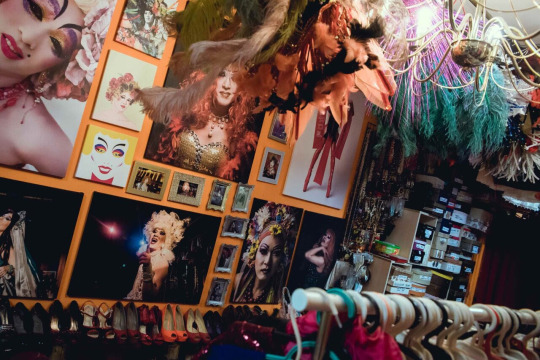
In Kim Lee’s Dressing Room
PAT MIC / MUZEUM WARSZAWY
Szeląg and Tomasik say that Nguyen didn’t like to dwell on the racist taunts he sometimes faced. Be that as it may, he publicly weighed in on what Polishness could and should mean by starring in a music video that parodied Poland’s infamous 2014 Eurovision entry. “We are Slavic” by Polish singer Cleo and record producer Donatan, with its busty, butter-churning milkmaids and appeals for foreigners to “try Polish women,” prompted a collective groan from the country’s feminists and liberals. Donatan’s comments denigrating that year’s winner — Austrian drag queen Conchita Wurst — only added fuel to the fire.
Kim was not one to sling back insults. Instead, she twirled around a meadow in Polish folk dress, lip-syncing to lines about “hot Slavic blood” and Polish women “ruddy as fresh bread.”
Wojtaszczyk and the drag performers The Beet’s correspondent interviewed also recalled Kim’s role in integrating Poland’s drag scene and raising its profile, whether through hosting “Miss Drag” pageants or judging competitions. Teo Łagowska and Agnieszka Małgowska of the Drag King Szarm Trio — the aforementioned Warsaw collective of female and gender-queer performers who embody mostly masculine characters — stressed that Kim advocated inclusivity within a scene that they say still sidelines groups like theirs.
Nguyen’s untimely death from the coronavirus in 2020 was “a shock for Poland’s rainbow community,” Małgowska says. “We always thought that Kim would become a senior drag queen, like Lulla [la Polaca], that she would dance until the end of time,” she laments.

In Kim Lee’s Dressing Room
PAT MIC / MUZEUM WARSZAWY
Szeląg, Tomasik, and Staroszczyk all spoke of the Museum of Warsaw exhibition as a means of mourning the artist and honoring his memory. Tomasik, the author and Kim’s long-time friend, says that a “terrible sadness” remains, but he also notes his satisfaction that Polish drag is finally beginning to get official recognition. “It’s an art with a decades-long history and its own icons,” he says. “These are just the first attempts to commemorate, remember, and honor them.”
8 notes
·
View notes
Text
A lesbian activist, an anti-war protester and a memoirist Eva Kollisch was a woman rose above tragedy.
By Luke Peteley | [email protected]
STATEN ISLAND, N.Y. -- Eva Kollisch, 98, a Jewish refugee who was educated as a teen on Staten Island and later became a noted memoirist and a lesbian rights advocate, died Oct. 10 of a chest infection at her home in Manhattan, according to media reports.
Born in 1926 to a Jewish family outside Vienna, Austria, Kollisch faced persecution from the rising Nazi regime. As war loomed in 1939, Kollisch fled the Holocaust aboard a Kindertransport train, as part of the mass rescue of nearly 10,000 children to Britain prior to the outbreak of the second world war, as detailed by Kveller.
In 1940, she and her brothers arrived in the U.S. and were reunited with their parents in New York; the family would settle in an apartment on Staten Island, according to The New York Times.
A graduate of Curtis High School, Kollisch recounted in a 2016 interview how her early political views were shaped during her time as a student at the school.
youtube
“I went to high school on Staten Island and had a couple of years, sort of uninteresting years, in high school,” she said. “But it was safe. Nobody beat me up, nobody called me a Jew b***d or anything like that. And then toward the end of my second year I met a bunch of Trotskyists and it made a big impression on me.”
She continued that she “found a kind of home, an intellectual home. And a home for my own sense of injustice and wanting to make things right, making them OK. They were far from OK.”
After high school, she left Staten Island and worked on an assembly line in Detroit, and as a labor organizer. Despite joining the Trotskyist movement as a teen, Kollisch said she became disillusioned by the overwhelming male leadership.
It wasn’t until 1986 that she met future wife Naomi Replansky, a poet and labor activist. As noted by The New York Times, she first had two marriages to men, Stanley Plastrik in 1942, and Gert Berliner, an abstract expressionist artist and fellow refugee.
While with Berliner, the couple moved to New Mexico, where Kollisch wrote while working as a cook at a uranium mine, and as a social worker. It was there that she gave birth to a son, Uri; he and a grandson are the only immediate survivors. The couple then returned to New York and separated in 1959.
“I didn’t go through this period of great suffering that so many women did in the ‘40s and ‘50s, and by the 1960s, you know, it was a part of my androgyny, really, to have loved some men and to love women,” Kollisch said in a 2004 interview.
Kollisch and Replansky married in 2009.
In 2016, after decades as a couple, Kollisch and Replansky won the Clara Lemlich Social Activist Award; in 2020, the New York Times profiled how the couple were surviving the COVID-19 pandemic together. Replansky died at age 104 in January.
For work, Kollisch was a professor of comparative literature at Sarah Lawrence College, according to Kveller.
In addition to a career as a professor, Kollisch also became a poet and a vocal activist. The Museum of Jewish Heritage notes that “her American arrest came for anti-Vietnam protests; she stood vigil as a Woman in Black, and took part in the Seneca Women’s Encampment.”
Kollisch went on to write two memoirs, “Girl in Movement” (2000) and “The Ground Under My Feet” (2007).
#Eva Kollisch may her memory be a blessing#Lesbian rights activists#Clara Lemlich Social Activist Award#Arrested for protesting the Viernam War#Books by women#Girl in Movement (200)#The Ground Under My Feet (2007)#The poet Naomi Replansky#Youtube
3 notes
·
View notes
Text
After five weeks of testimony that included nearly 40 witnesses, more than 100 secret recordings, two COVID-related delays and about 16 hours of closing arguments, the jury in the historic corruption trial of former Chicago Ald. Edward Burke is expected to finally begin deliberating the case on Monday.
Before the jury of nine women and three men retires to the jury room, however, they must first be instructed on the law by U.S. District Judge Virginia Kendall, who will read aloud about 350 pages of jury instructions compiled by both sides over the past several weeks.
For the record, that’s longer than the 310 pages of Burke’s 1996 book “Inside the Wigwam,” a history of national political conventions held in Chicago, which was referenced several times during the trial.
Once the jury begins deliberating, they’ll elect a foreperson and go about sorting through the 19 counts in the case, which include 14 counts against Burke and a combination of other charges involving his two co-defendants, longtime ward aide Peter Andrews Jr. and real estate developer Charles Cui.
Though tedious, the legal instructions will be crucial in determining how the panel reaches its verdict, including making findings on everything from what constitutes official misconduct to whether Burke and his co-defendants acted “knowingly” when committing certain acts.
After three days of closing arguments wrapped last week, U.S. District Judge Virginia Kendall sent the jury home for the weekend. With Christmas week looming, Kendall told the panel they should not feel rushed in their discussions, particularly after a six-week trial, so if there is no verdict by Friday, they would not come back until after the New Year.
“I don’t want you to think I’m going to be Scrooge if you want to take a long time,” the judge said. “I’m not going to make you sit Christmas week. I don’t want anybody to be stressed that you can’t be with your families.”
Burke, 79, who served 54 years as alderman before leaving the City Council in May, is charged with 14 counts including racketeering, federal program bribery, attempted extortion, conspiracy to commit extortion and using interstate commerce to facilitate an unlawful activity.
Andrews, 74, is charged with one count of attempted extortion, one count of conspiracy to commit extortion, two counts of using interstate commerce to facilitate an unlawful activity and one count of making a false statement to the FBI.
Cui, 52, is facing counts of federal program bribery, using interstate commerce to facilitate an unlawful activity and making false statements to the FBI.
The racketeering charge alleges Burke used his significant City Hall power to try to get business for his private law firm from developers, including the New York-based team tackling the $600 million renovation of the Old Post Office.
The indictment alleges Burke and Andrews conspired to extort the Texas-based owners of a Burger King in his Southwest Side 14th Ward, and in a separate scheme, Cui is accused of hiring Burke’s firm, Klafter & Burke, because he was desperate to win a pole sign permit for a Binny’s Beverage Depot in Portage Park.
Burke is also accused of threatening to block an admission fee increase at the Field Museum to retaliate against officials who failed to give a paid internship to a daughter of one of his longtime City Council allies.
At heart of the case were more dozens of wiretapped phone calls and secretly recorded meetings made by Daniel Solis, the former 25th Ward alderman who turned FBI mole after being confronted in 2016 with his own wrongdoing.
In closing arguments last week, prosecutors put up on large video screens a series of now-notorious statements made by Burke on the recordings. Among them: “The cash register has not rung yet,” “They can go (expletive) themselves,” and “Did we land the tuna?”
Assistant U.S Attorney Sarah Streicker told the jury that Burke’s words were their ticket into his real frame of mind.
Burke’s attorneys, meanwhile, argued that the entire case is the product of overzealous government agents and their puppet, Solis, whom even prosecutors did not trust enough to put on the witness stand themselves. Instead, he was called by the defense and grilled about his motivations.
“The fact alone that they didn’t call Danny Solis in their case creates a reasonable doubt,” Burke attorney Joseph Duffy said. “Why did we have to bring Danny Solis in here? That should give you pause, the fact that they ran an investigation on Mr. Burke for 30 months with a star witness Danny Solis undercover and they didn’t have the decency to bring him here.”
3 notes
·
View notes
Photo


Ciclos: Blooms of Mold is José Parlá’s newest publication exploring the artist’s life, including his recovery from a near-fatal infection with COVID-19 in 2021. Join us in celebrating the release of the publication during Artist’s Eye on January 19 at 7 pm.
Parlá will be joined by his friend and fellow artist Hank Willis Thomas to discuss Parlá’s five large-scale landscape paintings featured in Brooklyn Abstraction: Four Artists, Four Walls currently on view in the Beaux-Arts Court. The two artists will also ruminate on Parlá’s study of mycelium—vast formations of fungi that compose communication networks within the natural world—as well as the functions of creative communities as support systems and art-making as healing.
🎟 http://bit.ly/3GCoafF
📷Installation view, Brooklyn Abstraction: Four Artists, Four Walls, Brooklyn Museum, on view August 12, 2022 - August 6, 2023. (Photo: Danny Perez, Brooklyn Museum) → Courtesy of José Parlá
#Brooklyn Museum#brooklyn#museum#nyc#New York City#nyc events#art#exhibition#installation#José Parlá#painting#art events#Hank Willis Thomas
12 notes
·
View notes
Text




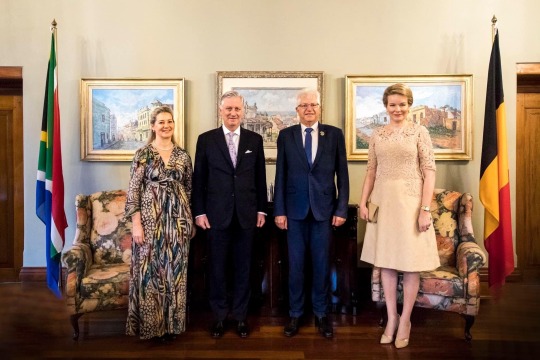


📷 Belgian Monarchy
🇧🇪 King Philippe and Queen Mathilde of the Belgians
Saturday, March 25, 2023
“The King and Queen visit Afrigen Biologics. The South-African biotech company collaborates with two Belgian companies, Univercells and eThERNA, to develop the first mRNA African-owned Covid-19 vaccine. It also conducts research on other diseases in Africa, such as malaria and tuberculosis.
Next, during a visit to @uwconline, the Sovereigns will learn about the collaboration between the South Africa University and @vubrussel and @ugent on digital inclusion. @UWConline is known for its anti-apartheid stance and its fight against discrimination and inequality in contemporary South Africa.
We finish the day at the Zeitz Museum where the King and Queen visit the exhibition "When We See Us: A Century of Black Figuration in Painting" and meet Belgian CEOs and their South African partners.”
8 notes
·
View notes
Text
online sovereignty: total yuck!
digital ideas of decolonization
written by zoe ⋆˙⟡♡

The digital world has come to replace the physical one in a number of aspects of our lives. This, of course, brings into question how we perceive and interact with our cultural monuments now that we have moved to a collective online space. Namely, this includes the museum.
Beatrice Martini states: “Western culture has long been defining how the world came to existence, its history, and how it works from a perspective which is centred on a Western and white point of view.” Martini continues to break down how colonial ways of thinking have shaped the online world as a reflection of our face-to-face reality. While Martini asks questions surrounding the accessibility and exclusionary practices that exist within colonial ways of thinking on the internet, I wonder how colonial institutions interact with our digital spaces and how we can find new ways to interact with our histories and the preservation of our past.

The museum as an institution has received a number of valid criticisms throughout the 20th and 21st centuries. Today we view museums as educational centres and preservations of knowledge, our museums play a significant role in national and cultural identity. This also means that these institutions have power, and the power to control the narrative of our histories. The relationship to the colonial is intrinsically tied to the museum, they were quite literally created to house the ‘treasures’ of colonization during the 16th century. By the 1980s, there was a shift in museum practices but the message remains the same, these are homes of colonial spoils.

So when a museum goes online, how does the colonial interact in this digital setting? How do these collections, which museums have developed plans to reconceptualize in their physical institutions, become decolonized in the dimensions of technology? We cannot leave it unchallenged, as Martini explains, the power imbalance will continue to grow and could perhaps open new gateways for colonial powers to exert their power in this digital realm.
So how do we challenge this growing online sovereignty? With the emergence of the covid-19 pandemic, many museums were forced to make the swift switch to the digital world in order to survive, and one who did so while simultaneously challenging the colonial past through their virtual museum was the Middelheim Museum located in Belgium.
Once known as the Colonial College, what is now Middelheim Museum prepared students for management positions in the Belgian-occupied Congo. This provided the museum with a unique opportunity to present its colonial past, take responsibility for the histories that preceded the institution today and provide the framework for reconciliation. The exhibition Congoville has artists tracing the colonial tracks while also presenting the vibrant and flourishing central African culture.


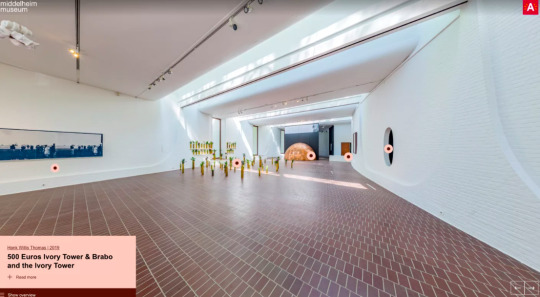
The exhibition can be accessed through their website and through VR, creating a visual archive that will remain accessible for years to follow. The exhibition was–and continues to be–a success. It was new and refreshing for artistic communities but most importantly it presented a step towards a decolonial digital space. I strongly believe online spaces like Middelheim Museum would be a strong addition to Martini’s reading list and simultaneously provide museums with an opportunity to reshape their identity, moving away from the oppressive colonial world that predates them and moving towards a progressive and decolonial digital world.
brb zoe⋆˙⟡♡
7 notes
·
View notes
Text
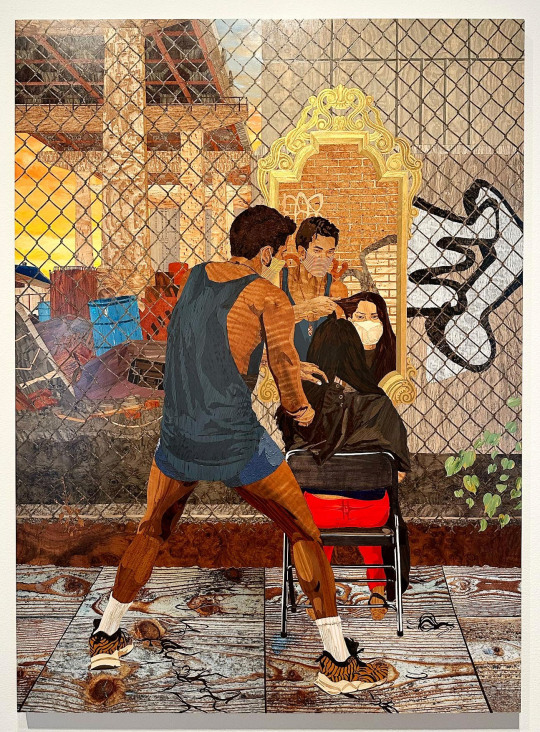
(Alison Elizabeth Taylor, “Anthony Cuts under the Williamsburg Bridge, Morning”, 2020 Marquetry hybrid (wood veneers, oil paint, acrylic paint, inkjet prints, shellac, and sawdust on wood)
Currently at Orlando Museum of Art is The Outwin: American Portraiture Today, an impressive collection of work in a variety of mediums.
From the museum’s website-
Launched in 2006 to support the next wave of contemporary portraiture in the United States, the National Portrait Gallery’s celebrated triennial Outwin Boochever Portrait Competition is a major survey of the best American portraiture selected by internationally prominent jurors and curators. Now in its sixth edition, The Outwin: American Portraiture Today presents 42 works selected from over 2,700 entries, that foreground the vibrancy and relevance of portraiture today. In addition to paintings, photographs, drawings, and sculptures, The Outwin includes video, performance art, and textiles, highlighting the limitless possibilities of contemporary portraiture.
Open to both emerging and established artists, this year’s entrants were encouraged to submit work that moves beyond traditional definitions of portraiture, and to explore a portrait’s ability to engage with the social and political landscape of our time. The variety of media and subjects featured in the exhibition invite audiences of all backgrounds to find relation in the human experience.
Since its inception, finalists for the exhibition have been determined by a panel of jurors including three Portrait Gallery staff members and four external professionals (critics, art historians, artists). The competition is endowed by and named for Virginia Outwin Boochever (1920 – 2005) who, for 19 years, volunteered as a docent at the Portrait Gallery. Her commitment to advancing the art of portraiture is continued through the support of her children.
Below are a selection of works from the show and information about them from the museum.
Alison Elizabeth Taylor– Anthony Cuts under the Williamsburg Bridge, Morning, 2020 (pictured above)
On walks around her Brooklyn neighborhood during the COVID-19 lockdowns, Alison Elizabeth Taylor encountered the hair groomer Anthony Payne, who,with his workplace shuttered, had taken his scissors, mirror, and chair to the streets. Payne sought to financially support the Black Lives Matter movement, especially in the aftermath of George Floyd’s murder, and turned over proceeds from his donation-based haircuts to organizations advocating for social justice.
Taylor’s process, one she developed and named “marquetry hybrid,” incorporates vivid paints, inkjet prints, and the natural grains of over one hundred veneers. Marquetry, with its inlaid combination of woods, can “memorialize,” Taylor notes. She acknowledges the history of the craft, which was favored by Louis XIV (1654-1715) when he was acquiring furniture for Versailles. By giving Payne this “royal treatment,” Taylor aims to pay tribute to him. ”I want him to see how much his example meant to me,” she explained.

Kira Nam Greene– Kyung’s Gift in Pojagi (From the series “Women in Possession of Good Fortune”), 2019, Oil, gouache, colored pencil, and acrylic ink on canvas
In this mixed-media work, by Kira Nam Greene, the artist Kyung Jeon faces us with relaxed self-assurance. She is carefully positioned on her couch as her long black hair falls over her orange and turquoise tunic. In the foreground, a wooden cylinder containing paint brushes reveals her medium of choice. A plate with persimmons, consumed during the harvest festival Chuseok to celebrate good fortune, brims with potential while the rest of the painting pulsates with action.
Greene situates her friend in a fantasy world that echoes Jeon’s artwork and their mutual interest in the traditional Korean fabric quilting technique of pojagi. Two rabbits, representing Jeon’s Chinese zodiac, appear to be concocting a potion. Flowers sprout as kaleidoscopic patterns envelop her. The reference to pojagi, the visible paint drips in the background painting, and the hands of the sitter- left unfinished- invoke the role of tradition, process, and exploration in artmaking.

Stuart Robertson– Self Portrait of the Artist from the Out and Bad series, 2020, Aluminum, earth, acrylic paint, enamel, paper,metallic bubble wrap, sequins, and gold foil on wood
“In my world, skin is high-tech, amorphous, and armored,” the artist Stuart Robertson observes. “Blackness is percussive, lustrous, flexible, and indestructible.” Self-Portrait of the Artist depicts a fragment of a man- half of his face and his upper torso-shiny and monumental. A black beard delineates his jaw, and a small gold hoop adorns his ear. Although the figure is cropped beyond recognition, the work’s title provides a clue.
Through the alternation of flat and repoussé aluminum sheets, Robertson achieves a hypnotic effect, a poignant tension playing on what he reveals or hides from us viewers. His refusal to depict his entire face or figure challenges the notion of what a portrait should be and blocks the objectification of the Black male body, so often sexualized in visual culture. Simultaneously, Robertson delivers an irrepressible, resplendent image of that body, one inspired by the aesthetics of Jamaica’s dancehall culture.

Vincent Valdez– People of the Sun (Grandma and Grandpa Santana), 2019, Oil on canvas
An elderly couple faces us with the gentle authority that old age provides. People of the Sun (Grandma and Grandpa Santana) is a portrait of Vincent Valdez’s maternal grandparents. “My grandparents spent most of their time outside,” the artist recalled. “Grandpa spent his entire life working under the blazing Texas sun as a carpenter and yard worker, cutting lawns in the wealthy communities of San Antonio right up until he passed away. Grandma was constantly working with her hands–raising kids, washing, sewing clothes, and tending the plants in her yard.”
The Santanas are depicted in a space defined by details the artist remembers: their vintage AM radio, their plants, their homemade clothes. The bedsheet, like the Virgen de Guadalupe’s aura, signals their spiritual role in the family. This portrait connects the pair to the Indigenous and mestizo cultures of the American Southwest, including the Aztec and Maya, who honored the sun.
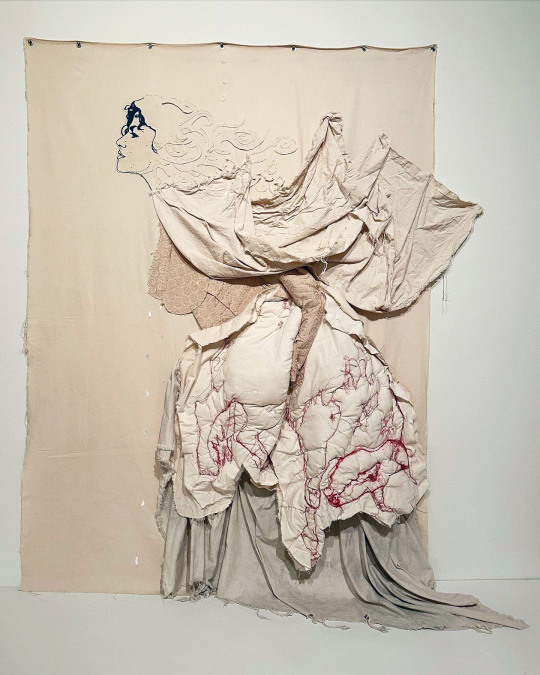
Elsa María Meléndez– Milk, 2020, Canvas with silkscreen, embroidery, ink, and other textiles
Elsa María Meléndez routinely crosses the boundaries between artistic mediums in large-scale artworks that command space and attention. Combining silkscreen, drawing, and various needlework techniques, Milk portrays the artist charging forward, determined. She carries a limp bull and advances while her breasts drip glistening drops of milk.
Created six months into the COVID-19 lockdown, this artwork encapsulates Meléndez’s reflection on the fight for gender equality in Puerto Rico. As people went into quarantine, gender violence escalated around the world. In Puerto Rico, where femicides increased substantially, feminist organizations took to the streets, demanding that the government declare a state of emergency. They received the scorn of substantial sectors of society, across gender lines. In response, Meléndez created Milk, an icon of indomitability that recognizes the strength of women and their life-sustaining force while acknowledging their willingness to nurse the beast that sustains patriarchy.

Timothy Lee– A portrait of the comet boy as a bearer of memories, 2019, Silk, heat-transfer ink, gold leaf, and oil on canvas
In his practice, Timothy Lee investigates his struggles with anxiety, which he feels stem from his Asian American, queer, immigrant, and diasporic identities. Yet, while drawing from his personal narratives more broadly, Lee also attends to the disquieting complexities that are intrinsic to growing up as part of two cultures.
The ironic figure of the “comet boy,” visualized here as if emerging from a halo, is both an embrace of and a departure from the artist’s past. The dynamic interplay of light, shadow, and texture evince the layered nature of Lee’s inquiry. A keen attention to materials and precision, as evidenced by the incised cuts throughout much of the work’s surface, allude to the artist’s earlier scientific training. Snapshots of the artist’s childhood in South Korea emblazon the comet boy’s body. Memories, and with them the past, become part of the flesh, like tattoos.

Clarissa Bonet– Glimpse, 2019 from the City Space series, Inkjet print
The discovery of a figure amongst a grid of windows and vertical blinds conjures the disorienting situation of coming upon an unknown face peeking through a window. With that chance encounter comes the recognition that one is being watched, possibly even surveilled. Glimpse is part of a series that explores urban life, specifically the relationship between private and public spaces and the daily experiences of those traversing these areas, including those of the artist.
Though made before the COVID-19 pandemic lockdowns, for Clarissa Bonet, this photograph brings to mind the recent state of being “isolated from the public spaces we all used to enjoy freely.” The unidentified woman may be looking onto an unknown subject left out of the composition, or onto nothing at all.
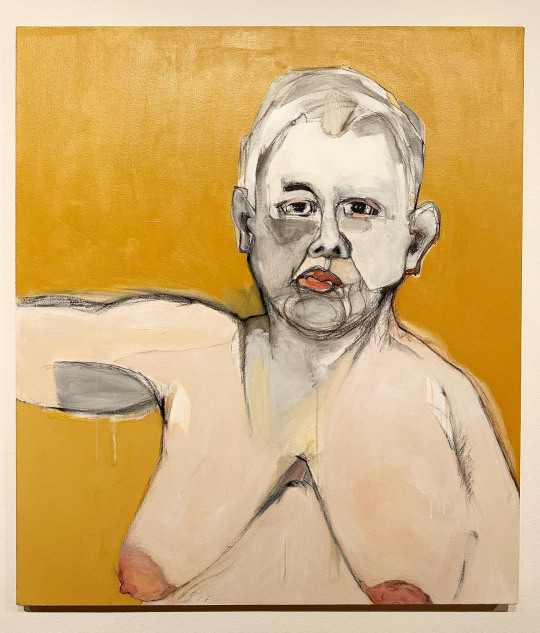
Ilene Spiewak– Deeper into the Isolation of Self Information and Gender, 2020, Acrylic paint and charcoal on canvas
For over fifty years, Ilene Spiewak has focused on the relations between color and visual space, painting at the edge of representation and abstraction. The introspection and solitude brought by the pandemic made her compositions more sparse and her palette more restrained. “I realized what I had in my studio was myself always. . .. I began to insert myself in my paintings more than I was conscious of in the past.”
In this self-portrait, Spiewak outlines her silhouette in charcoal. Her face and nude torso are rendered in soft shades of white, pink, and gray that push against the yellow background. With frankness, she paints her aging body, countering centuries of idealized, youthful, slender female nudes in art. By placing her figure off-center on the picture plane, with her right arm extended but truncated, Spiewak subtly allows us into the intimate act of observing and painting herself.


Inga Guzyte– Cutting Edge, 2020, from the Kindred Spirits series, wood and used skateboards
Inga Guzyte recycles old skateboards, sawing and reassembling them into new sculptural configurations. Cutting Edge, a portrait of Alison Saar, is from Guzyte’s series “Kindred Spirits.” which honors women who have made their mark in the art world. The ethos of bravery and independence that is part of skateboard culture conveys the tenacity and perseverance of Guzyte’s role models.
Aptly made from reclaimed wood, a recurrent material in Saar’s sculptures and installations, this portrait stands between painting and sculpture. Saar’s expression evokes her fierceness and commitment to her practice. Her headdress points to her Afro-diasporic background, while its dynamic red and orange twists suggest her fiery creative energy. Like a flame, the headwrap attracts a multitude of moths, which recur in Saar’s work to signify a go- between for the real world and the spiritual world.
This exhibition is on view until 10/8/23.
#Orlando Museum of Art#The Outwin#Florida Art Shows#Art Shows#Outwin Boochever Portrait Competition#Alison Elizabeth Taylor#Art#National Portrait Gallery#Timothy Lee#Stuart Robertson#Art Installation#Clarissa Bonet#Elsa María Meléndez#Vincent Valdez#Fiber Art#Fiber Arts#Ilene Spiewak#Inga Guzyte#Kira Nam Greene#MIxed Media Art#Mixed Media Photography#Orlando Art Shows#Outwin 2022#Painting#Photography#Portrait#Portraits#Portraiture#Sculpture#Triennial
2 notes
·
View notes
Text

There is a new issue of Kolaj Magazine!
Kolaj is a quarterly, printed, 10"x8" art magazine
featuring reviews and surveys of contemporary collage. The magazine takes an international perspective on collage as a medium, a genre, a community, and a 21st century art movement.
SUBSCRIBE OR ORDER A COPY
INSIDE THE ISSUE
In On attrape bien les followers avec des likes (We Are Good at Catching Followers with Likes), this issue’s cover image, a tiny man watches a boy who watches a man holding a sign with an Instagram like on it. Two women gaze from a distance. A sign in the back says, “Believe Me”. The collage is a commentary on how social media fights for our attention, devotion, and patronage. A portfolio of SLip‘s collage appears in the issue.
In the issue editorial, Ric Kasini Kadour asks what happens when a work of art becomes detached from the artist, orphaned, unidentified? “Lost Collages” considers those artworks found in attics and thrift shops, divorced from their maker.
In the issue’s round up of News & Notes, we report on Canadian collage artist Rhonda Barrett who opened Cuts & Paste Gallery in Halifax, Nova Scotia in January 2023 and Alicia Saadi‘s billboard installation in New Brunswick, New Jersey. (Saadi recently took part in Kolaj Institute’s Collage as Street Art Residency.)
In “The Abbondanza of Order & Chaos,” Austin, Texas collage artist Lance Letscher shares his idea of good art: “Not to fall into a cliché, but if the work transcends itself, it becomes something bigger or more complex, or more intricate, or more interesting or more curiosity provoking, then it’s more than the sum of its parts: it’s a successful piece of artwork.” Check out or interview with this legend.
“I came to poetry by accident…Which brought me to collage,” writes Kim Triedman in “The Poetics of Collage.” The Massachusetts artist and award-winning author recalls her journey and how poetry and collage mingle in her practice.
Anna Rémuzon explores the subtle, vibrant meeting of Expressionism, Surrealism & Pop Culture in the artwork of Czech artist Tomáš Jetela in “A Rare Hallucination of Reality…Defragmented.” Rémuzon writes, “The characters are fragmented, detached pieces. The faces, the articulated bodies, the accessories—each element has its own origin, its own identity. Jetela ‘glues’ them together in his composition, which creates a new, mutant form of humanity.”
Steven Specht, Ph.D., NCS picks up on Mark Vargo’s article about AI art that appeared in the previous issue in “Art, artifacts, & authenticity: The Problem of De-coupling Process from Product.” He writes, “As a medium, collage lends itself to being mimicked by computer generative algorithms. But I would argue that any generative AI process represents nothing close to the authentic experiences that Kyle [Riecker], or I, or any other collage artist experiences in the process of creating art—even if the process itself is chaotic.”
“The Art of Joy” reports on The University of Colorado Collecting of Frances Joy Bradbury’s COVID-19 project. The artist worked with curator Tyler Alpern, a longtime artist friend, to turn the collection into a book which presents a sample of the collages the artist made every day during the COVID-19 pandemic in 2020 and 2021.
Evelyn Rapin shows us ekphrasis in reverse in “The Secret Life of Plants.” She writes, “Experimentation, chance and accident are huge elements to be embraced in collage assembly.”
In “Southern Axis,” Ric Kasini Kadour writes, “History is always approached on an axis, a through line that guides the narrative. Art History is no different. Traditionally, art history is viewed through an academic lens looking at the evolution of painting and sculpture. A premise of Kolaj Magazine and Institute is that when we turn the axis of art history to collage, the traditional canon opens up to greater diversity.” Kadour reviews the 20th Anniversary Exhibition at the Ogden Museum of Southern Art with an eye to how collage challenges our view of the art history canon.
SUBSCRIBE OR ORDER A COPY
Kolaj 38 is sent automatically to members of the
Silver Scissors & Golden Glue Societies.
#collage#collage art#collage artist#art#artist#collage illustration#art collage#paper collage#collage book#art history#art show#vintage art#art books#art education#book art#contemporary art#artwork#modern art#fine art#digital art#graphic art#artist residency#artist books#contemporary artist#artist portfolio#artist book#artist profile#artist collective#artists books
2 notes
·
View notes
Text

youtube
How Australia treats it's Aboriginal Youth... (Though I wouldn't choose the word "embarrassment" about an apartheid system. I would call it a disgrace)
“We’ve seen restraint practices so dangerous they’ve been banned in Queensland. We’ve seen children assaulted, treated in highly abusive ways. (...)
She said an investigation into the treatment of children was necessary, her calls echoed by Aboriginal leaders and prominent non-Indigenous community leaders... "
https://www.theguardian.com/australia-news/2022/nov/30/international-embarrassment-wa-government-taken-to-task-over-treatment-of-aboriginal-children-in-detention
"On 13 February 2008 Prime Minister Kevin Rudd made a formal apology to Aboriginal and Torres Strait Islander peoples, particularly to the Stolen Generations whose lives had been blighted by past government policies of forced child removal and assimilation." National Museum Australia
A film by John Pilger. The first scenes are from 2011 and 2012!💔 Australia - SHAME ON YOU!!!
“This is not bad apples and lone wolves – this is systemic,” she said. “Clearly, there’s a culture here that has been fostered for some time that has enabled people to express so freely such overt, racist views.”
Indigenous peoples all over the world have been overrepresented among covid-19 deaths during the pandemic. A willed policy and "Business as usual"?
https://www.nma.gov.au/defining-moments/resources/national-apology
#mustsee#first nations#australia#australia today#aborigines#knowledge#politics#university memes#john pilger#Youtube#shame#evil#modern nazism#indigenous rights#first nation#wef#world economic forum wef
12 notes
·
View notes
Text

Stitching a Nation Together
They initially sewed by hand. They subsequently used sewing machines. Their pay, however, has historically been small in comparison to the fondness Americans have had for the products that they and their co-workers before them have produced since the late nineteenth century.
They were, and are, the sewers and sewing machine operators of the Valley Forge Flag Company.
Founded in 1882, the Valley Forge Flag Company has operated almost continuously through war and peace, seeming to slow only for the national transition from a forty-eight to a fifty-star flag, following the admission of Alaska and Hawaii to the Union in 1959, and for the COVID-19 pandemic that began in 2020.
One of the largest flag manufacturers in the nation, the company grew to become a multi-community operation with factories in Baumstown, Birdsboro, Robesonia, Royersford, Spring City, and Womelsdorf, Pennsylvania by 1967.
Four years earlier, a group of women from the Womelsdorf plant crafted one of the most important artifacts in the nation—the flag that draped the casket of President John F. Kennedy, following his assassination on November 22, 1963. The commanding officer of an honor guard unit that was involved in planning the late president’s state funeral later confirmed this fact.
Meticulously folded before it was presented to the Kennedy family, that flag was carefully preserved by curators at the John F. Kennedy Library and Museum in Boston and remains there to this day, a touching symbol of a family's terrible loss and an artifact of reassurance that America's democracy is resilient and cherished.
Less famous variations of the Kennedy flag have waived gently over the graves of countless veterans of foreign wars since that dark period while others have flown over small-town government buildings, the U.S. Capitol, military bases at home, and American embassies abroad.
Chances are that the flag you pledged allegiance to in elementary school was, in fact, made by one of the sewing machine operators of Valley Forge Flag. Their stitches have held our nation together during some of its best and worst times, giving Americans a symbol to rally around, regardless of personal and political differences.
Think about that—and about each one of those stitches made in each one of those flags since 1882, as you watch Old Glory fly proudly this Fourth of July. And then say a silent prayer of thanks for the many unsung women and men who have made it possible for you to look up with pride.
Image: Unidentified employee of the Valley Forge Flag Company's Spring City, Pennsylvania factory creating a new American flag on July 1, 1982 (public domain image courtesy of the U.S. National Archives and Records Administration).
#fourth of july#american history#pennsylvania history#american pride#sewing#american flag#patriotism#history#america#john f. kennedy#jfk#president kennedy#kennedy assassination#kennedy funeral
2 notes
·
View notes
Text
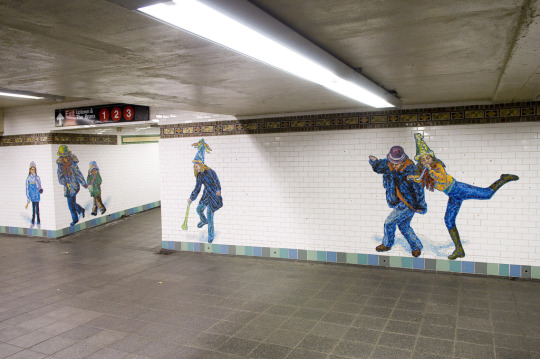

In “Revelers” (2008) at Times Sq-42 St (1,2,3,7,N,Q,R,W,S) station, Jane Dickson celebrates the age-old impulse to gather – 70 expressive life-size figures meander along the corridor’s walls, enjoying themselves and each other's company, calling to mind life’s many celebrations including New Year’s Eve at the popular Times Square ball-drop overhead.
Dickson’s paintings are currently also on view in the #WhitneyBiennial through September 5, featuring artwork created during the height of the COVID-19 pandemic and based on her photographs of Times Square in the 1980s. Highlighting the similarities and disparities of that era and now, Dickson explains, “I chose to be a witness to my time, not to document its grand moments but to capture the small telling ones, the overlooked everyday things that define a time and place.”
#MTAarts #JaneDickson #permanentart #mosaic
Photos: Thierry Gourjon; Whitney Museum
11 notes
·
View notes